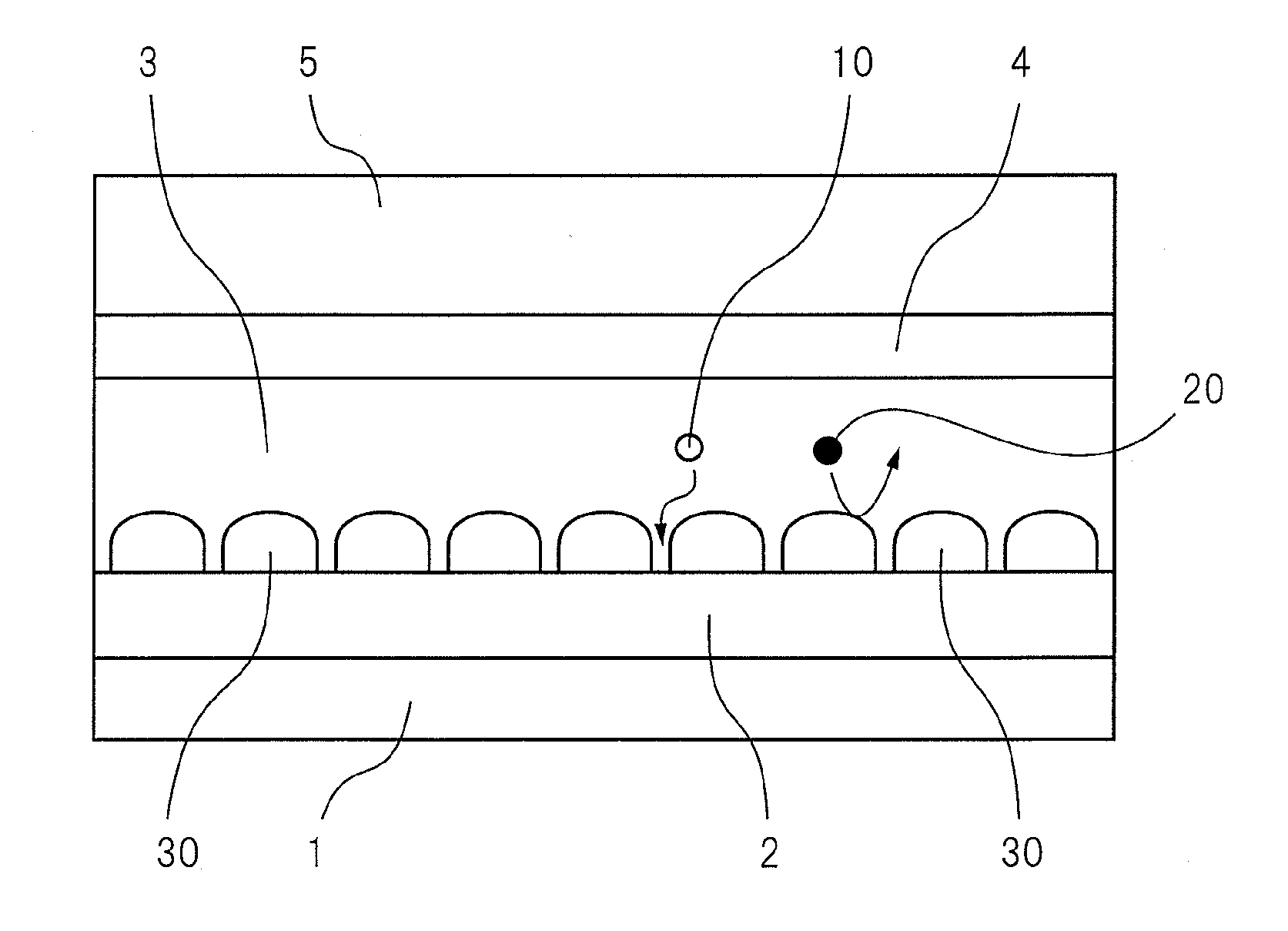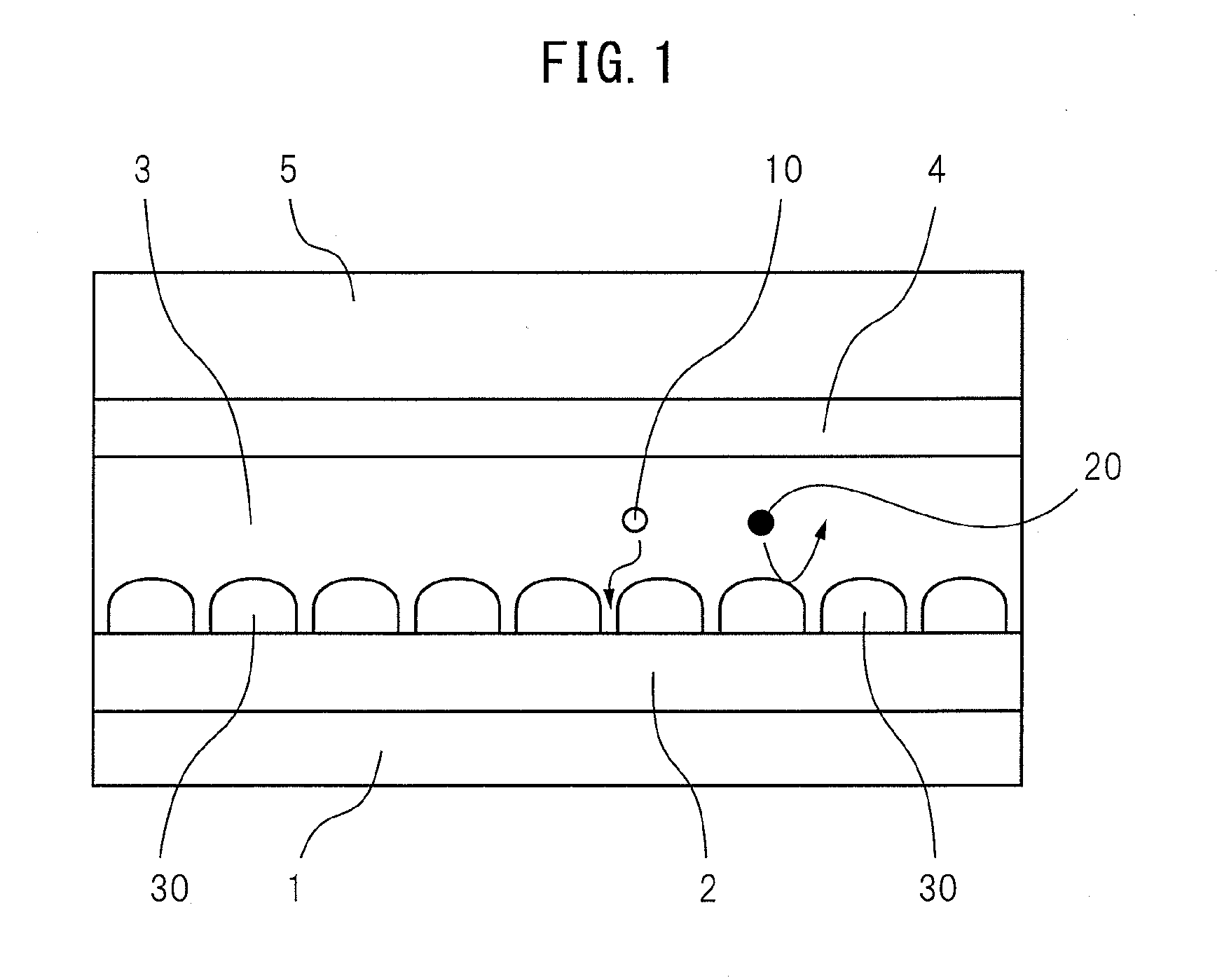Czts-based thin film solar cell and method of production of same
a thin film solar cell, czts technology, applied in the direction of semiconductor/solid-state device manufacturing, electrical apparatus, semiconductor devices, etc., can solve the problem of not being able to obtain high photovoltaic conversion efficiency which can withstand practical use, and achieve the effect of improving the efficiency of electron collection, reducing the rate of back surface recombination of electrons, and increasing the photovoltaic conversion efficiency
- Summary
- Abstract
- Description
- Claims
- Application Information
AI Technical Summary
Benefits of technology
Problems solved by technology
Method used
Image
Examples
Embodiment Construction
[0029]In general, the contact interface between the light absorption layer (semiconductor layer) and metal back electrode layer in a solar cell is a part which has a high density of dangling bonds and other crystal defects and where the speed of recombination of carriers becomes the fastest. Therefore, in a crystalline solar cell which is made using a conventional silicon wafer as a material, a point contact structure which uses a high quality passivation film is employed between the light absorption layer and the back electrode layer and reduction of the speed of recombination of carriers is sought.
[0030]However, in current CZTS-based thin film solar cells, realization of the point contact which is employed in crystalline solar cells is difficult. When applying the above art relating to crystalline silicon solar cells to a CZTS-based thin film solar cell, it is necessary to form a reduced defect, high quality insulating film (passivation film) between the semiconductor layer and el...
PUM
| Property | Measurement | Unit |
|---|---|---|
| size | aaaaa | aaaaa |
| temperature | aaaaa | aaaaa |
| thickness | aaaaa | aaaaa |
Abstract
Description
Claims
Application Information
 Login to View More
Login to View More - R&D
- Intellectual Property
- Life Sciences
- Materials
- Tech Scout
- Unparalleled Data Quality
- Higher Quality Content
- 60% Fewer Hallucinations
Browse by: Latest US Patents, China's latest patents, Technical Efficacy Thesaurus, Application Domain, Technology Topic, Popular Technical Reports.
© 2025 PatSnap. All rights reserved.Legal|Privacy policy|Modern Slavery Act Transparency Statement|Sitemap|About US| Contact US: help@patsnap.com



